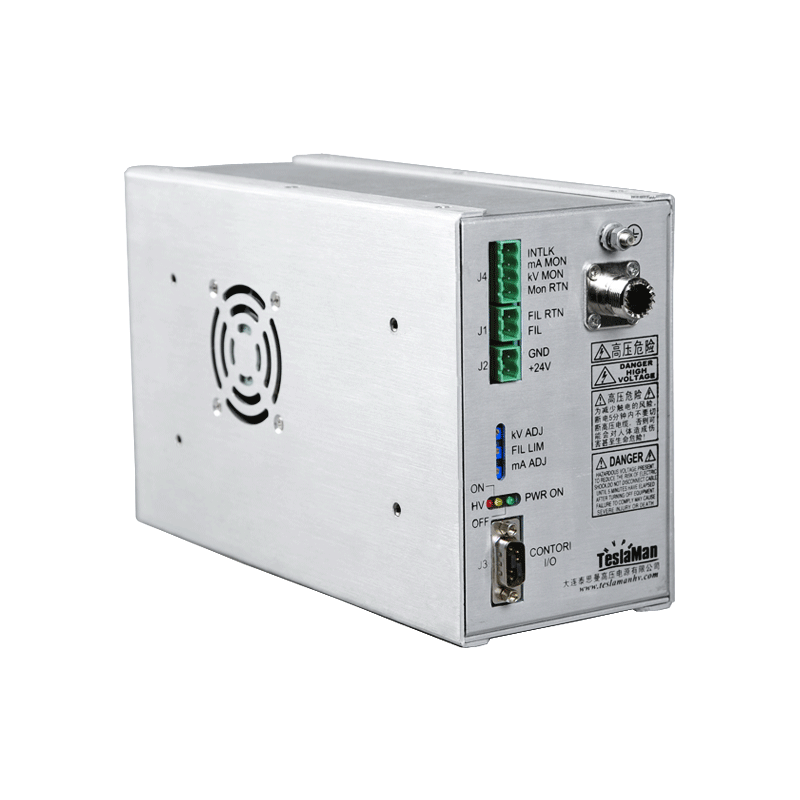Modular Innovation Strategies for High-Voltage Power Supplies in Etching Equipment
High-voltage power supplies for plasma etching equipment are undergoing a structural transformation driven by the need for flexibility, fast maintenance, and operational resilience. As etching applications diversify—from deep silicon structures to advanced dielectric patterning—process tools require power systems that can adapt to wide impedance ranges, rapid plasma transitions, and increasingly complex chamber configurations. Modular high-voltage design offers a path toward enhanced reliability, configurability, and serviceability while preserving the electrical stability essential for plasma uniformity.
A key innovation in modular high-voltage design lies in the development of distributed power stages. Instead of relying on a monolithic supply block, modern etchers can integrate multiple independently controlled high-voltage modules connected through a coordinated control architecture. This approach allows the system to scale voltage levels, current capacity, or pulse modes according to the chamber’s evolving process demands. When a recipe requires specialized plasma characteristics—such as high-density ion bombardment or low-damage etching of sensitive films—modules can be combined or isolated to create optimal electrical conditions.
Modularity is also crucial for improving uptime and maintainability. Plasma etch tools operate continuously for extended periods, and the failure of a conventional monolithic power supply often necessitates full system shutdown. With modular architecture, faulty modules can be isolated and replaced individually without interrupting the entire tool. Hot-swappable module design allows maintenance teams to perform quick service operations, reducing downtime and enhancing production stability.
Another innovation involves the modular separation of functional roles within the power system. High-voltage units used for plasma ignition, bias power, and chamber electrostatic control can be decoupled into dedicated functional modules. Each module is optimized for specific performance requirements—for example, one tuned for pulse stability, another for low-ripple bias control, and another for rapid voltage transitions during plasma ignition. Functional decoupling improves reliability by preventing cross-interference and enables process engineers to fine-tune plasma characteristics with higher granularity.
Pulse-modulation modularity also plays a significant role in etching applications. Many advanced etch recipes leverage tailor-made pulses—ranging from low-frequency waveforms to microsecond bursts—to manipulate plasma density, ion energy distribution, and substrate exposure cycles. Modular pulse units employ independent timing controllers, high-speed gate drivers, and isolated energy-storage networks that can produce complex, multi-phase pulse patterns. By combining modules with different pulse-generation capabilities, etch tools can achieve sophisticated waveform designs without redesigning the entire power infrastructure.
Modular high-voltage systems also enhance thermal management. Each module generates heat independently, allowing the overall system to distribute thermal load across multiple cooling paths. Advanced cooling designs incorporate micro-channel cold plates, variable coolant-flow control, and thermal-feedback sensors that regulate cooling intensities at the module level. As a result, thermal hotspots are minimized, component stress is reduced, and overall electrical stability is improved during long high-power etch cycles.
Electrical isolation and safety are strengthened through modularity. High-voltage etching environments require robust insulation systems to withstand plasma-induced noise, chamber grounding fluctuations, and fast transient events. By partitioning high-voltage stages into isolated modules, the system limits fault propagation and ensures that electrical disturbances in one unit do not compromise the entire power-supply assembly. Isolated communication pathways, fiber-optic control signals, and redundant sensing networks further strengthen module-level safety.
From a control perspective, modular high-voltage systems utilize coordinated intelligence to synchronize the behavior of all modules. Centralized controllers distribute reference waveforms, monitor module health, and balance load distribution. When plasma conditions shift abruptly—such as during pressure transitions or gas composition changes—the controller modifies module interactions to maintain plasma uniformity. For example, if one module encounters a temporary load spike, others can compensate to stabilize overall current and voltage delivery.
Scalability is a defining advantage of modular innovation. As etching technology evolves toward complex multi-frequency plasma excitation and high-density chamber designs, power requirements may increase or diversify. Modular systems enable incremental expansion without redesigning existing power frameworks. New modules can be added to support higher voltage levels, different waveform schemes, or specialized etch modes. This adaptability significantly extends the lifespan of etching equipment and reduces capital investment for power-system upgrades.
Modularity also supports energy-efficient operation. Under low-power conditions, unused modules can be placed in standby mode to reduce conduction and switching losses. During peak loads, active modules operate within their optimal efficiency region, avoiding the high-loss operation typical in oversized monolithic supplies. Dynamic load balancing allows the system to achieve uniform thermal and electrical stress distribution, enhancing long-term reliability.
Overall, modular innovation in high-voltage power supplies for etching equipment represents a shift toward flexible, maintainable, and high-performance architectures that meet the evolving demands of semiconductor plasma processing.




















